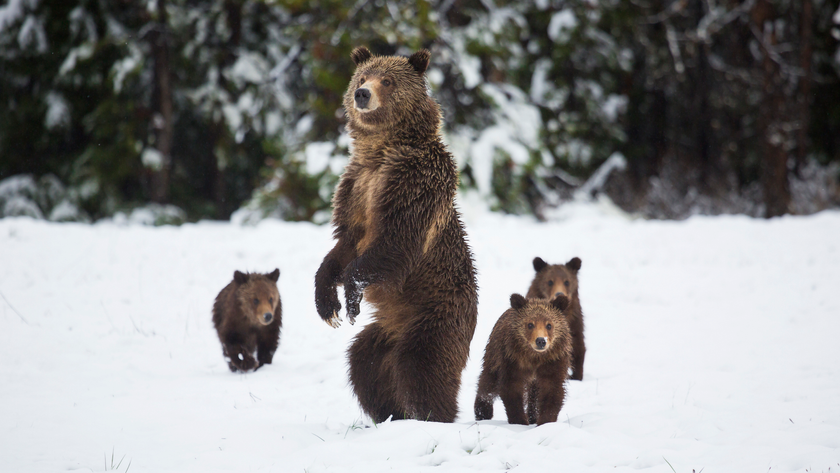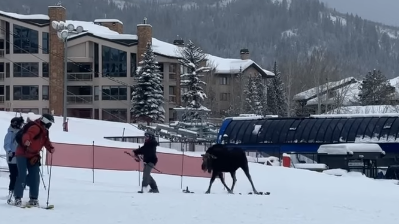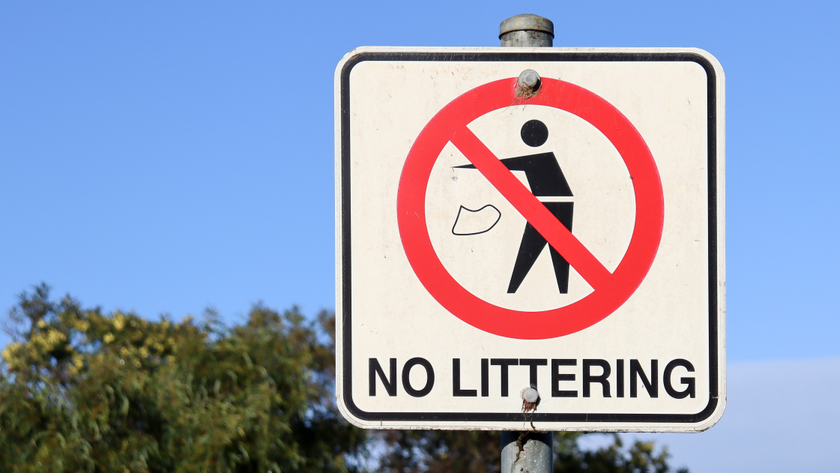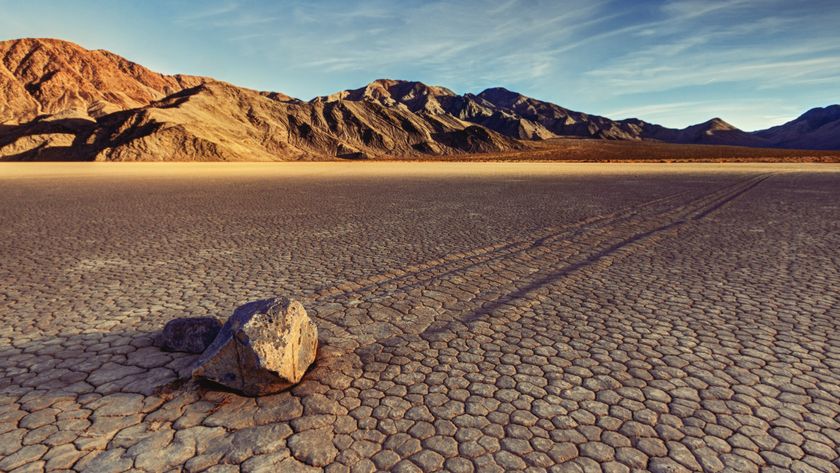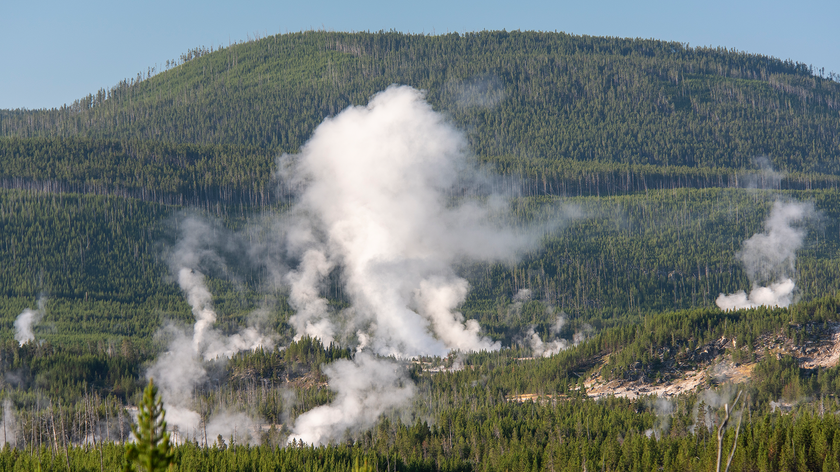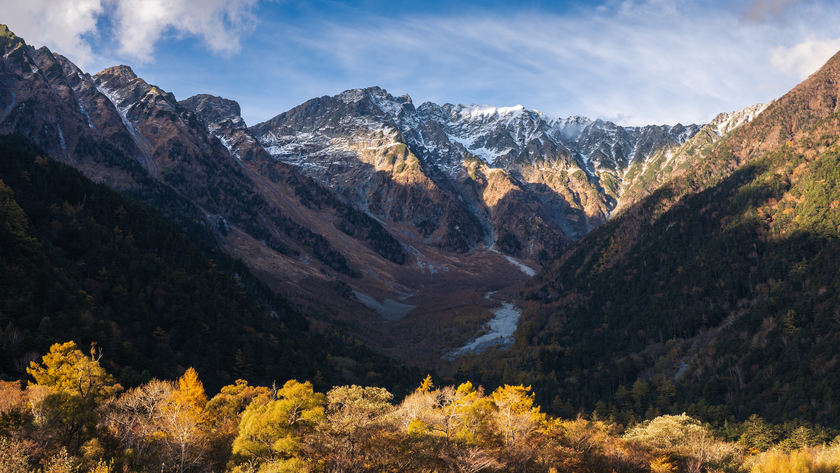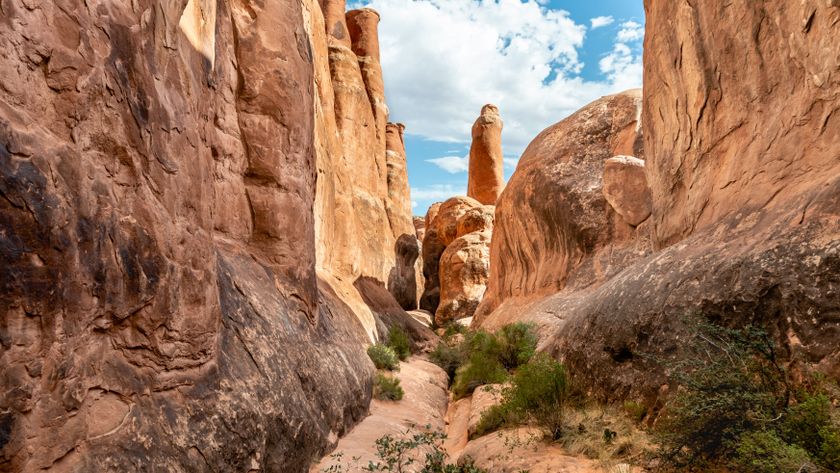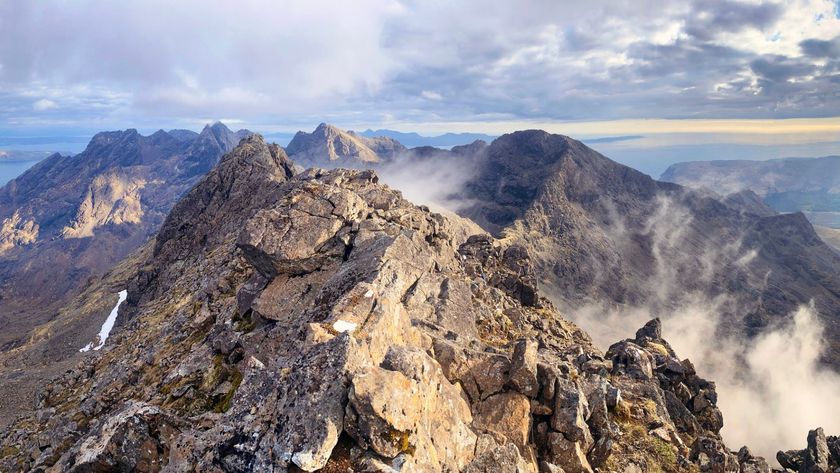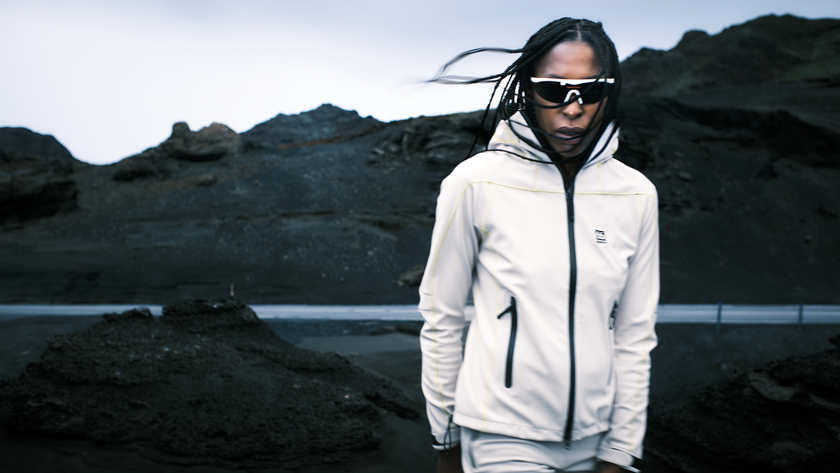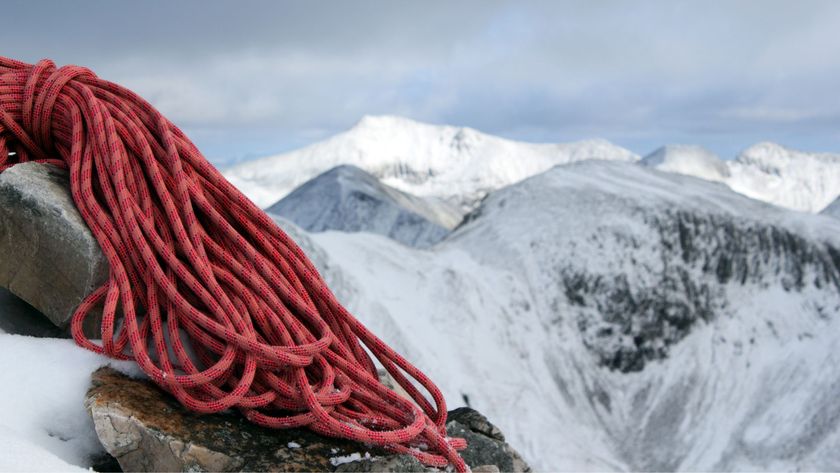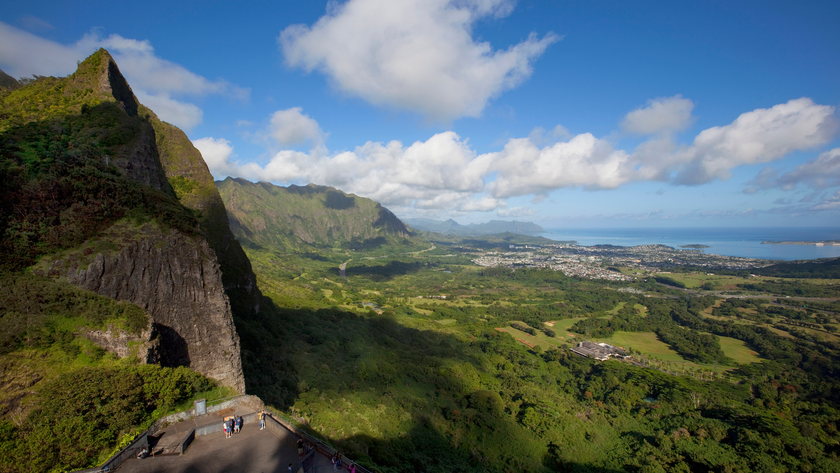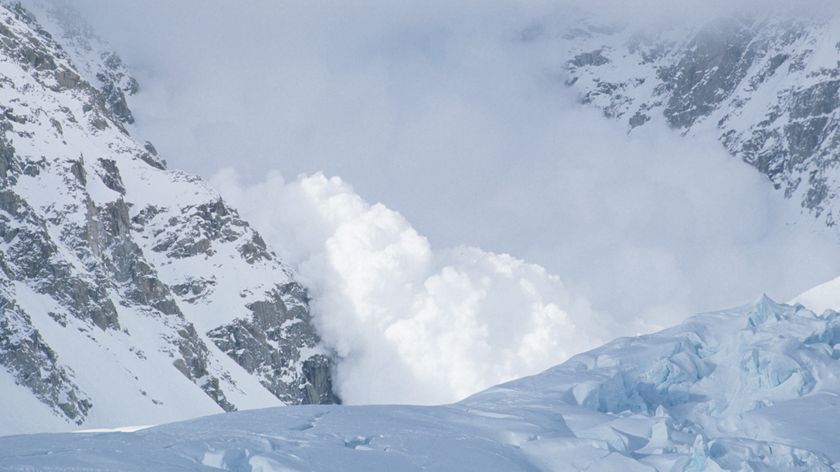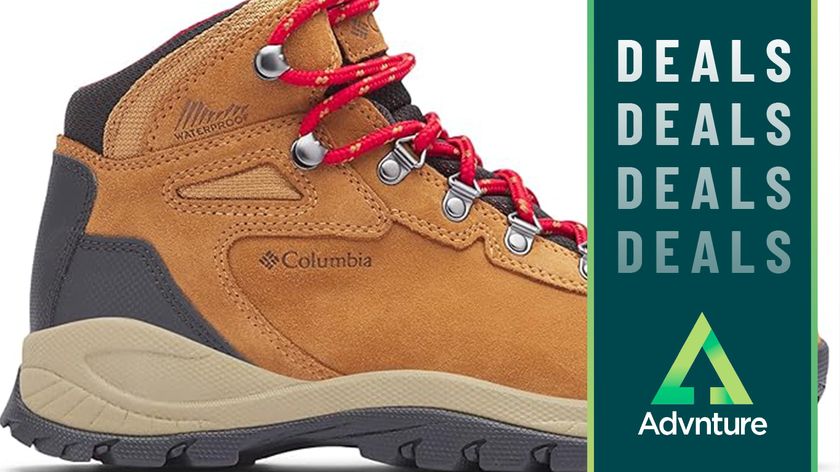Man photographing bison with iPad gets a speedy lesson in wildlife safety
The man left his vehicle in the middle of a bison jam at Yellowstone National Park
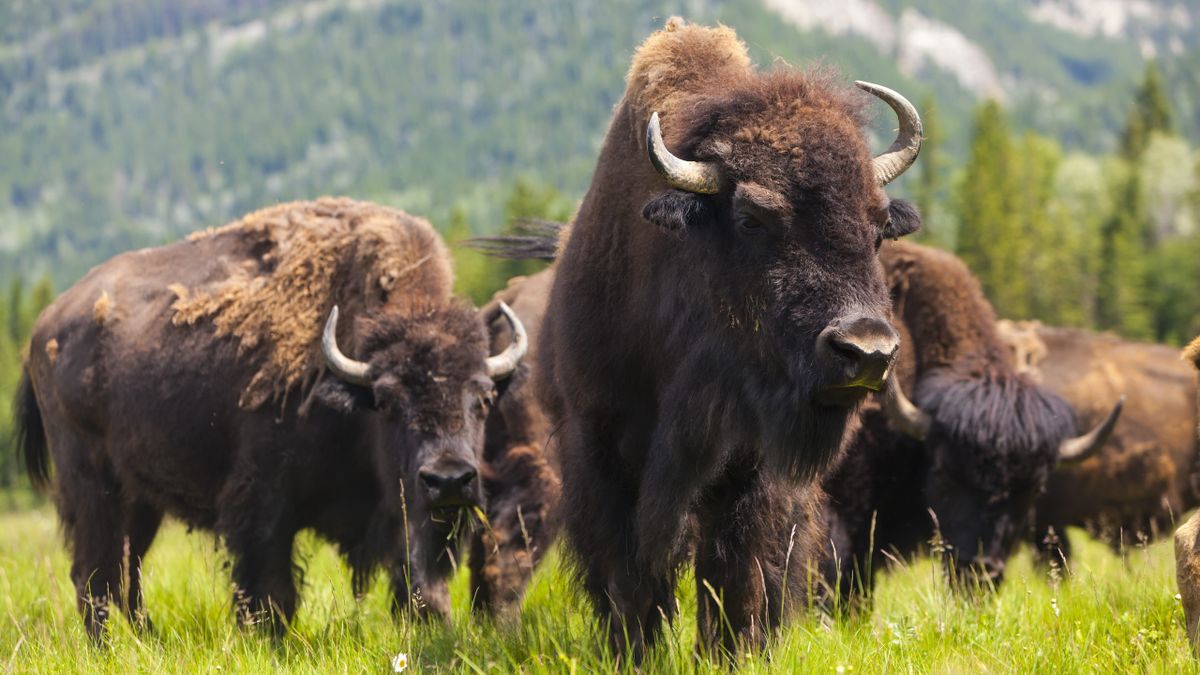
A man received a swift lesson in wildlife safety earlier this week after leaving his car in the middle of the road at Yellowstone National Park, strolling right up to a herd of bison, and snapping photos with his iPad.
"He reach[ed] the herd of bison, who were being nudged forward by park law enforcement, and fearlessly stepped right up to the herd to get his shots," said Jackie Boesinger Meredyk, who was also stuck in the traffic jam.
Jackie, a nature photographer, sent a video of the close call to Instagram account TouronsOfYellowstone, which documents bad behavior at the park.
The incident happened near Bridal Veil Falls, and the man seemed utterly unfazed by signs of agitation including flicking tails, which can be a prelude to a charge. He only backed off when a law enforcement officer intervened, telling him to move at least 25 yards back from the herd.
A post shared by TouronsOfYellowstone (@touronsofyellowstone)
A photo posted by on
According to Jackie, the man looked "very pleased with himself" when he eventually decided to return to his vehicle.
Safer wildlife photography
Although they may seem docile at first, bison are unpredictable and cause more injuries than any other animal at Yellowstone, including bears and snakes. The National Park Service warns visitors to stay at least 25 yards (23 meters) away at all times, and deliberately approaching or disturbing wildlife in National Parks is a federal crime punishable by fines and even jail time.
Signs that a bison is agitated include the animal pawing the ground, raising its tail, tossing its head, and making short bluff charges. All of these are clear indications that you're too close for comfort and need to move back. For more advice, see our guide how to avoid being gored by a bison.
Advnture Newsletter
All the latest inspiration, tips and guides to help you plan your next Advnture!
The best wildlife photographs are taken when animals are relaxed and engaged in natural behavior, not taken by surprise in the middle of a road.
"Take time to watch the animals in their environment as quietly as you can," says Professional wildlife photographer and panel judge for the RSPCA Young Photographer Awards Emma Jacobs. "What are they doing? What is around them? What is their character like? All these things can give you ideas for photos and help you tell a story."
You should always show animals respect, and remember that you're in their territory, not the other way around. "Only photograph natural behaviors and always avoid making animals do anything to cause them harm or distress," says Jacobs.
For more advice on taking great pictures, see our guide six wildlife photography tips from a pro.
- The best Black Friday hiking deals: offers on hiking boots, binoculars and more

Cat is Homes Editor at TechRadar and former editor of Advnture. She's been a journalist for 15 years, and cut her teeth on magazines before moving online. She helps readers choose the right tech for their home, get the best deals, and do more with their new devices.
